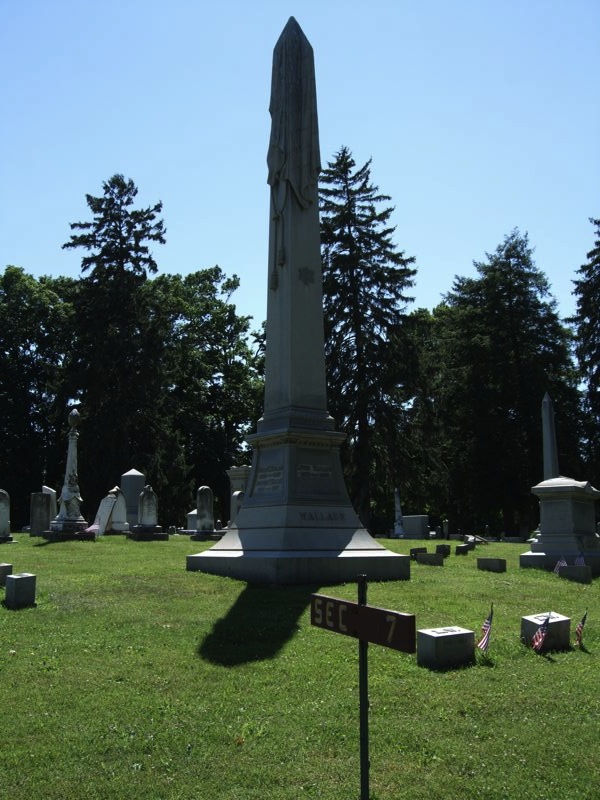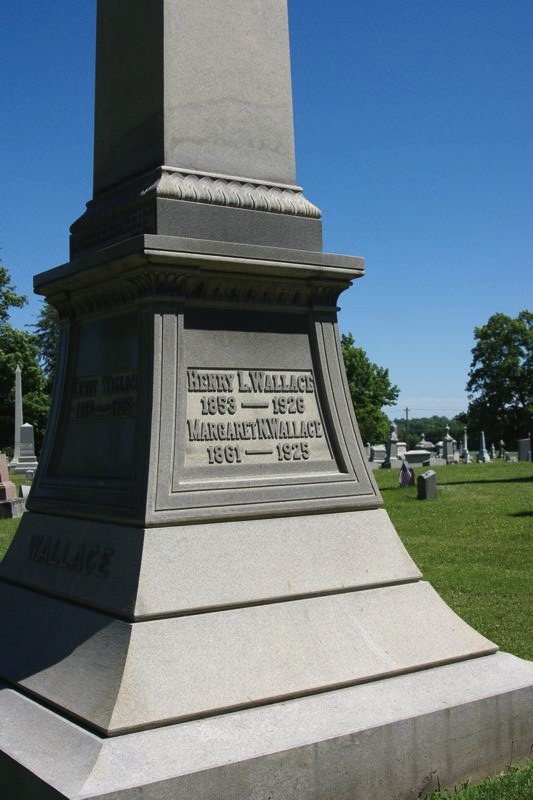General Lewis "Lew" Wallace
1827-1905
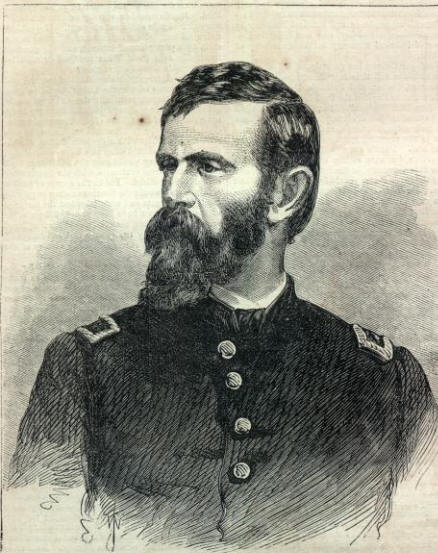
![]()
General Lewis Wallace
Lewis Wallace was born April 10, 1827. He was raised in a home that was politically inclined, his father David J. Wallace, being the sixth governor of the state of Indiana. It was during the Civil War the Lew Wallace began to enter his own right to fame. Initially he was appointed by Governor Oliver P. Morton as adjutant general for the purpose of organizing the volunteers across the state into assigned divisions of troops. He was later given a commission and led troops into battles at Fort Donelson and Fort Henry. He also had a significant role to play in the Battle at Shiloh. By the end of the war he had reached the position of Major General.
After the war, he was involved in the commission that tried the Lincoln assassination conspirators. From 1878-1881 he served as Territorial Governor of New Mexico, and was the U.S. minister to the Ottoman Empire from 1881-1885. However, what he is best known for was his literary contribution to history. In 1880 he completed Ben-Hur: A Tale of the Christ, a novel that has been reprinted many times and was considered the best-selling novel in America in the 19th century. It inspired at least two Hollywood productions, one in 1925 and the other in 1959.
As to his connection to the restoration movement, Lewis's mother, Esther French Test Wallace, died at the age of twenty-seven. Lew was only seven. His father remarried December 26, 1836 to a young nineteen year old woman by the name of Zerelda Sanders. Her father, Dr. John H. Sanders was from Kentucky, and the family was deeply connected with the Christian church. In his autobiography, Wallace recalled the assistance given to him by his new mother especially when his father became governor of Indiana. When the family moved to Indianapolis brought many changes. He said:
"My life in Indianapolis, it must be said, became more regular and tame, a result due in part to the authority sternly exercised by my father, but mostly to the gentler, if not wiser, influence of my step-mother, who, by looking after me, keeping me washed, combed, and well-clad, gradually initiated me into the comforts of a home intelligently managed.
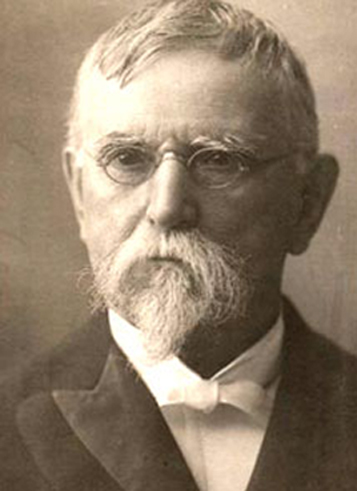
She was a member of the Christian Church, and insisted upon my attendance once every Sunday. I fear the services failed to impress me as she desired. My headgear was a flat-topped, black oil-cloth cap, visored before and behind, and, as it allowed pencilling of delicacy on its surface invisible until held at a certain angle against the light, I converted it into a drawing-tablet. Greasy, and always in need of deodorizing, still it was eagerly sought on the return from "meeting." The preacher, his assistant, the characters of the congregation, and all who had a peculiarity of face or manner were there pencilled in unmistakable likeness. So the prayer, the sermon, even the communion, observed as it was every Lord's day, might have been tedious to the others in attendance; the were not to me. I carried an occupation into the pew. (Lew Wallace, An Autobiography, Vol. 1, page 48)."
Though was reared in the Christian Church, in adult life he claimed no official connection with any church. Published in 1906, Lew Wallace's autobiography sets a detailed account of his life. Questions of his belief in God, and his church affiliation were greatly in the minds of people who knew of him. This was especially true since he had written one of the greatest selling novels in the 19th century, Ben-Hur: A Tale of the Christ. So, as to set the record straight, he opened his story with a straitforth explanation of his religious influence. He explained:
In the very beginning, before distractions overtake me, I wish to say that I believe absolutely in the Christian conception of God. As far as it goes, this confession is broad and unqualified, and it ought and would be sufficient were it not that books of mine—Ben-Hur and The Prince Of India—have led many persons to speculate concerning my creed. It seems best, therefore, to recognize that more is demanded of me. In doing so I will speak frankly, begging only that in thus finally disposing of the matter the reader will not judge me careless of the sanctities. I am not a member of any church or denomination, nor have I ever been. Not that churches are objectionable to me, but simply because my freedom is enjoyable, and I do not think myself good enough to be a communicant. None the less I believe in the Divinity of Jesus Christ; and that there may be no suspicion of haggling over the word "divinity," permission is besought to quote the preface of a little volume of mine, The Boyhood Of Christ: “Should one ask of another, or wonder in himself, why I, who am neither minister of the Gospel, nor theologian, nor churchman, have presumed to write this book, it pleases me to answer him, respectfully—I wrote it to fix an impression distinctly in my mind. Asks he for the impression thus sought to be fixed in my mind, then I would be twice happy did he content himself with this answer—The Jesus Christ in whom I believe was, in all the stages of his life, a human being. His divinity was the Spirit within him, 'and the Spirit was God.’” (Autobiography, page 1).
General Lew Wallace led a most colorful and public kind of life. He influenced thousands through his writings, and his place in history is very American, and most pertinent to this nations development. Though it would appear that his connection with restoration history is only brief, it is good to recall that connection. The church touched many lives, and through the kindness of a young step-mother, young Lewis was able to be influenced for good. Only eternity knows what differences were made in his life as a result of those planted seeds in his youth.
Wallace died in his home in Crawfordville, Illinois, February 15, 1905. He was seventy-seven years of age. He was buried at Oak Hill Cemetery where his grave is marked with a 30-foot obelisk monument designed by Sidney Speed. His wife, Susan follow him in death two years later. Others of their children and family members are buried in the well-marked plot at Oak Hill.
![]()
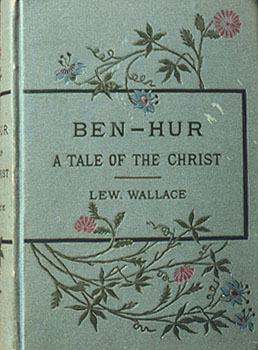
Ben-Hur
A Tale Of The Christ
![]()
Directions To The Grave of Lew Wallace
The Wallace monument is a most impressive obelisk set in the old Oak Hill Cemetery in Crawfordsville, Illinois. Head NW out of Indianapolis, Indiana on I-74. Go about 35 miles and take Exit 34 - Hwy. 231. Exit will cloverleaf. Turn right (south) on Hwy. 231. about 1.5 miles and turn right on Lafayette Ave. Turn right immediately on Old Oak Hill Road. Enter the cemetery at the main gate on your right. Take the first left and head toward the center of the cemetery. Skip the first left and head up the rise, but at the next fork bear to your left and then quickly to your right. You'll then be in front of Section Seven. Look for the large 30' obelisk facing the drive. This will be the Wallace plot. The address is 392 W. Oak Hill Rd. Crawfordsville, Indiana, 47933-8505. Office contact: 765-362-6602 for call ahead instructions if you need more help. The Grave is in Section 7. The GPS Coodinates of the grave are: 40°03'23.6"N 86°54'50.1"W / or D.d. 40.056543,-86.913920
![]()
Oak Hill Cemetery
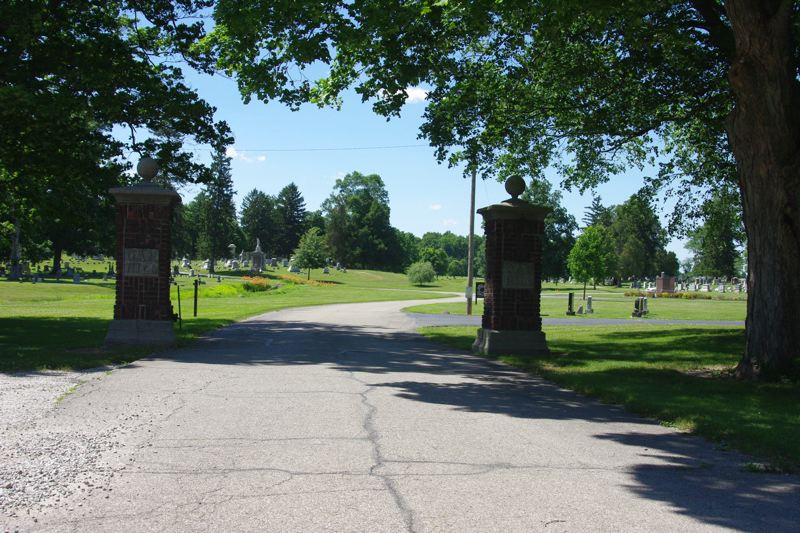
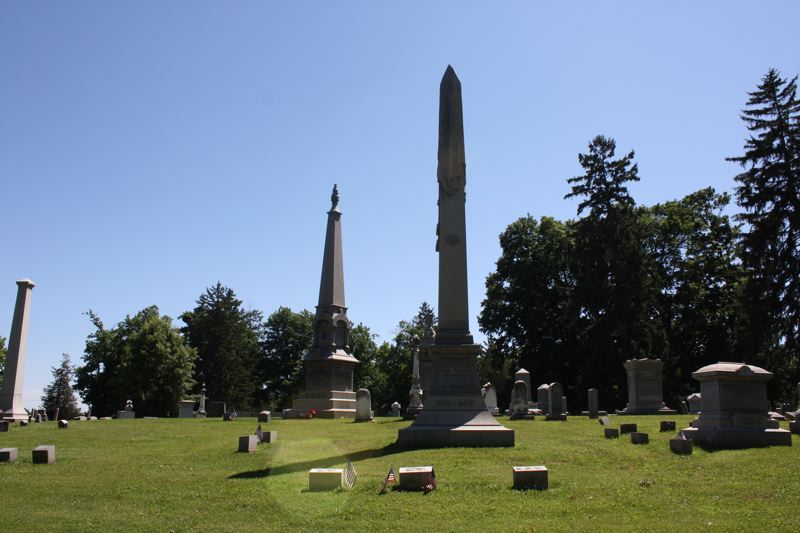
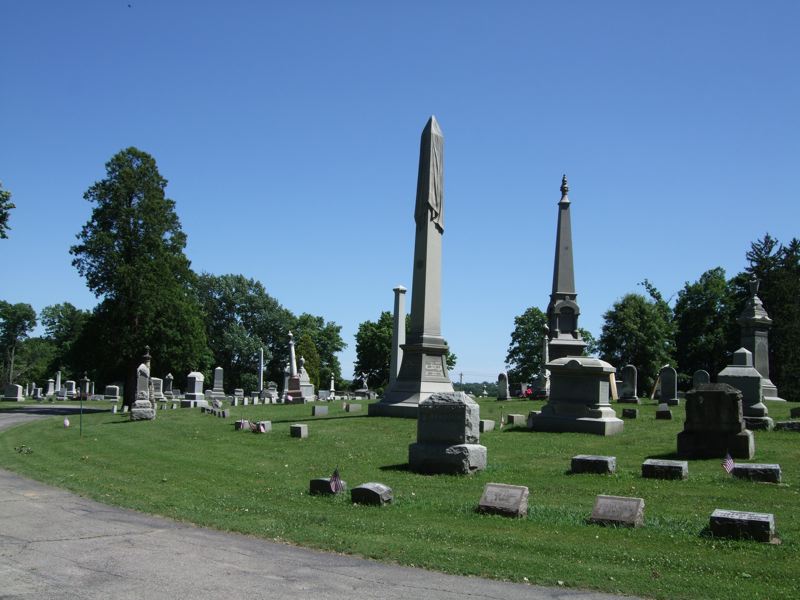
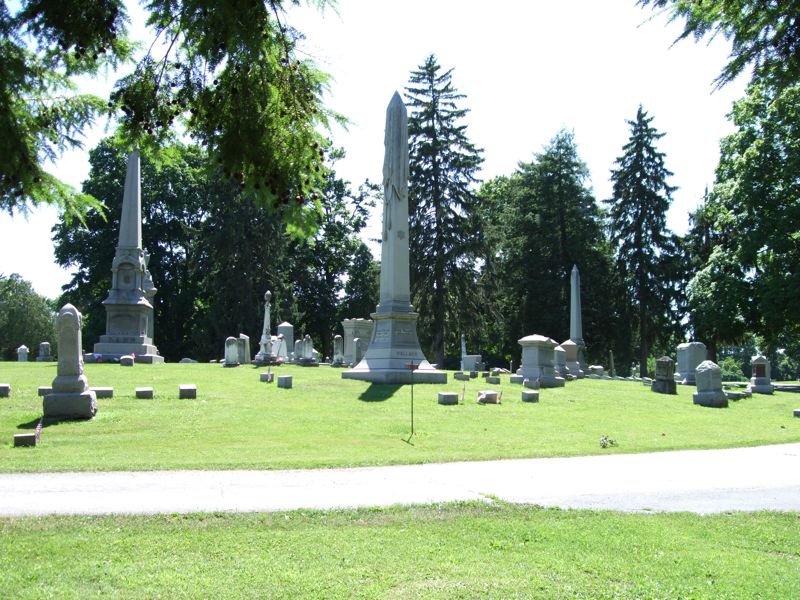
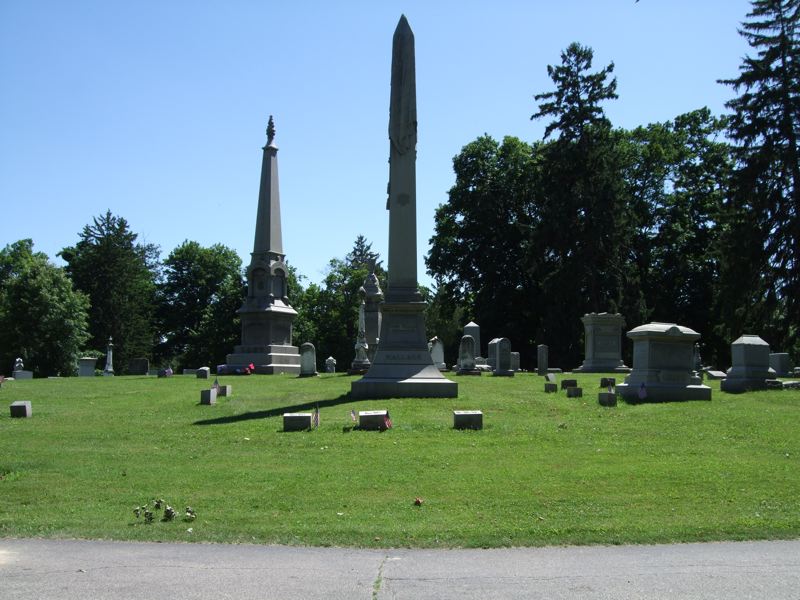
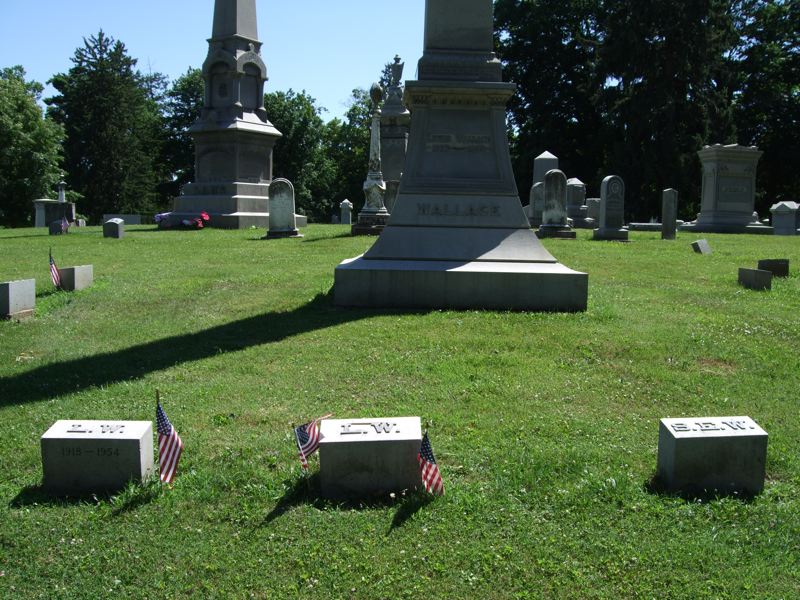
L.W. - Lew Wallace In The Center Plot
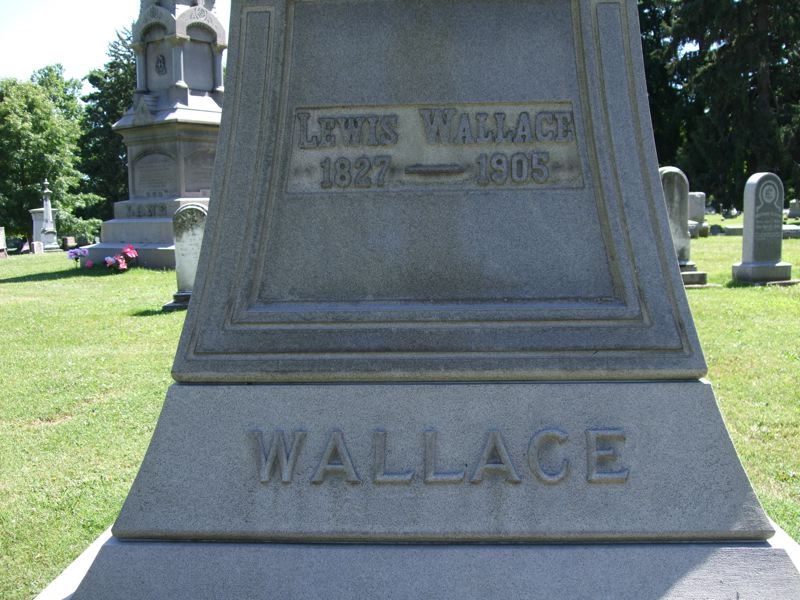
Lewis Wallace 1827-1905
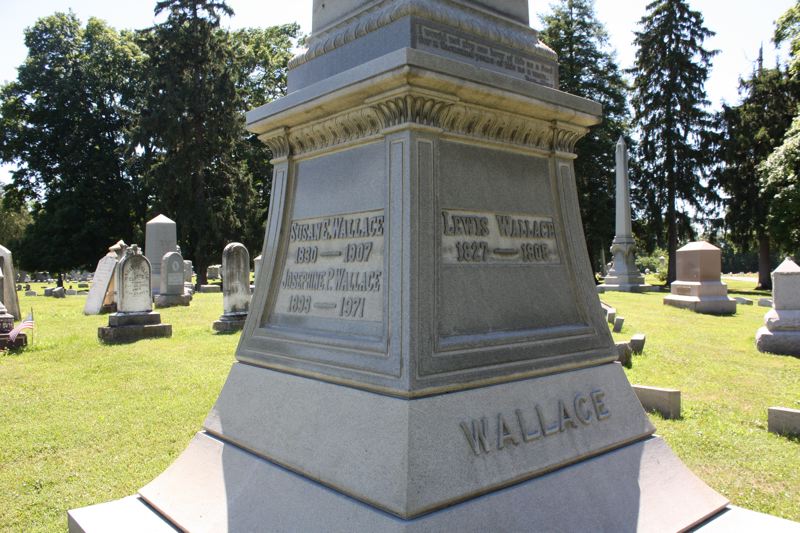
Susan E. Wallace 1880-1907
Josephine P. Wallace 1893-1971
Henry L. Wallace 1853-1926
Margaret N. Wallace 1861-1929
![]()
Other Links To Read More About General Lew Wallace
![]()
Special Thanks
In June, 2009 Tom L. Childers, C. Wayne Kilpatrick and Scott Harp traveled about 3000 miles in one week through parts of Tennessee, Missouri, Illinois, Indiana and Kentucky. During this time we found the graves of 75 church leaders in the Restoration Movement. Chronicling these leaders into webpages has been time consuming. Many thanks to Tom and Wayne in helping to take photos, share the driving, and putting up with your web master's slave-driving effort to see as many as we did in the time we had. Their photos as well as some of mine are seen on this page.
![]()

